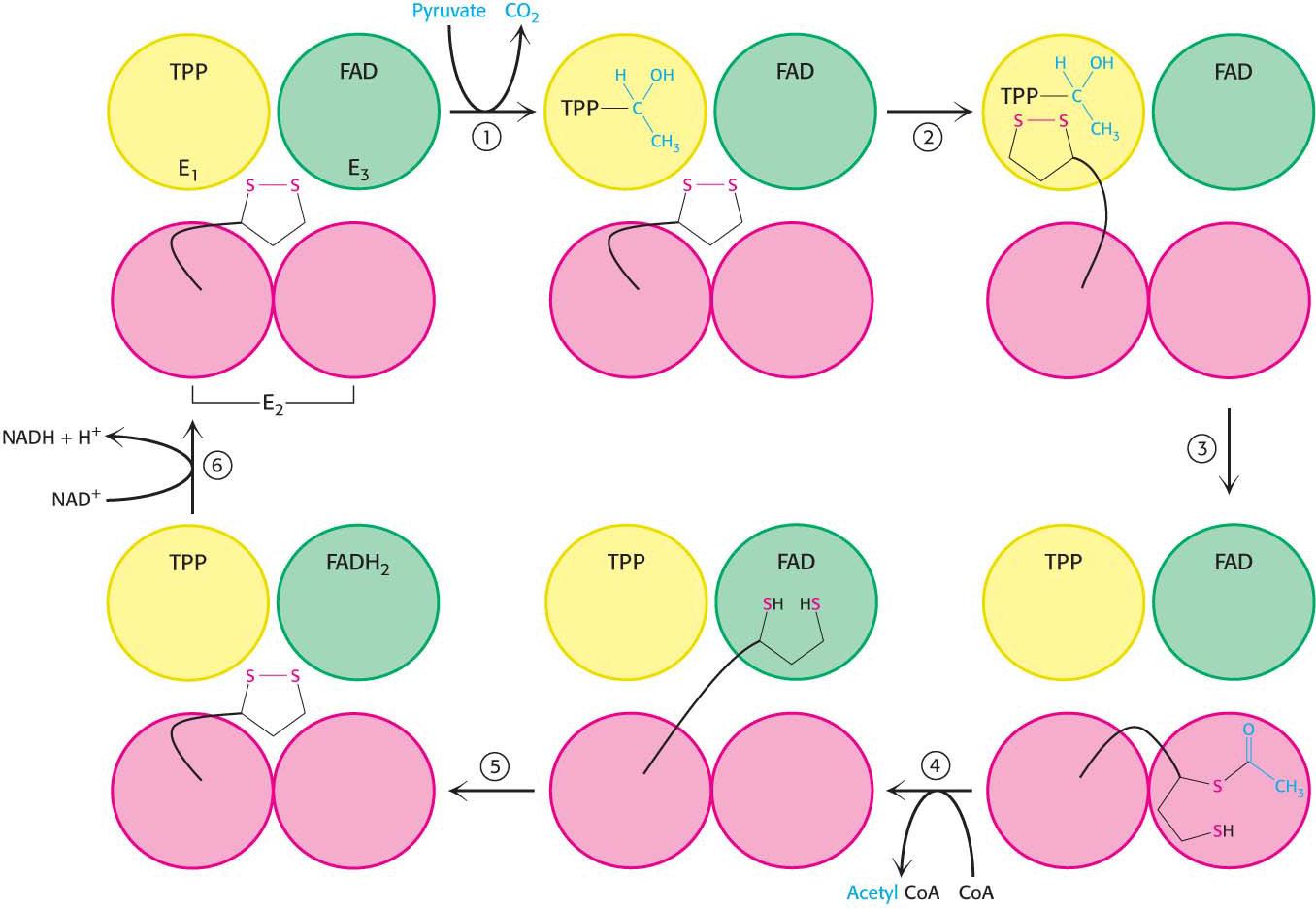
Figure 18.7 Reactions of the pyruvate dehydrogenase complex. At the top (left), the enzyme (represented by a yellow, a green, and two red spheres) is unmodified and ready for a catalytic cycle. (1) Pyruvate is decarboxylated to form hydroxyethyl-